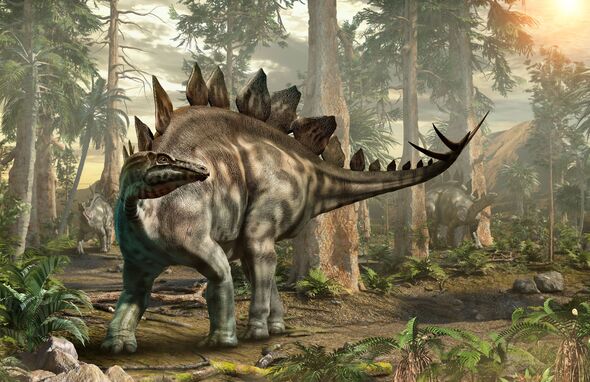A fossilised footprint of a Stegosaurus has been unearthed in a new country for the first time in its history.
The footprint was found in South Korea, in the Sadeung-myeon region of Geoje, Gyeongsangnam-do, officials revealed.
The remarkable find was made during a fossil site survey carried out by the city of Geoje, working alongside a research team headed by Professor Kim Kyung-su from the Korea Geoheritage Research Institute, which is part of Jinju National University of Education.
The Stegosaurus, a plant-eating dinosaur that roamed the earth during the Late Jurassic period (155 to 150 million years ago), was primarily known from fossil discoveries in North America.
It’s easily identifiable due to its unique double row of large plates along its back and spikes at the end of its tail.
Alongside the Stegosaurus footprint, the survey also uncovered a variety of other dinosaur footprints, including those of long-necked plant-eating dinosaurs (sauropods), meat-eating dinosaurs, and hadrosaurs.
The unearthing of these fossils offers fresh insights into the diversity of prehistoric life in the area.
Other notable discoveries from the survey include fossilised bird footprints, such as webbed bird tracks, Jindongornis tracks, and Hamanornis tracks, as well as traces of turtles and possible pterosaurs.
These fossils suggest a broad range of biodiversity during the Cretaceous period.
Significantly, 11 dinosaur skin impression fossils were unearthed across nine fossil layers, marking the site as the largest in South Korea for such fossils.
Dinosaur skin impressions, which are the preserved patterns of a dinosaur’s footprint skin, are seldom found and require specific conditions to form, enhancing the importance of this discovery.
The city of Geoje is set to present an interim report on these findings on October 18, with the comprehensive survey anticipated to be finalised by next month.
